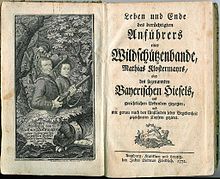Book frontispiece



A frontispiece in books generally refers to a decorative or informative illustration facing a book's title page, being the verso opposite the recto title page.[1] While some books depict thematic elements, other books feature the author's portrait as the frontispiece.
Origin
The word comes from the French frontispice, or the late Latin frontispicium, from the Latin frons ('forehead') and specere ('to look at'). It was synonymous with 'metoposcopy'. In English, it was originally used as an architectural term, referring to the decorative facade of a building. In the 17th century, the French term came to refer to the title pages in books, which were often decorated at the time with intricate engravings that borrowed stylistic elements from architecture, such as columns and pediments. Over the course of the 16th century, the title pages of books came to be accompanied by illustrations on the facing page, known as antiporte, and the term took on the meaning it retains today as early as 1682. By then, the English spelling had also morphed, by way of folk etymology, from 'frontispice' to 'frontispiece' ('front' + 'piece').[2]
See also
References
- ^ Franklin H. Silverman, Self-Publishing Textbooks and Instructional Materials, Ch. 9, Atlantic Path Publishing, 2004.
- ^ Michael Quinion, World Wide Words Entry
External links
- Prints & People: A Social History of Printed Pictures, an exhibition catalog from The Metropolitan Museum of Art (fully available online as PDF), which contains material on book frontispieces

